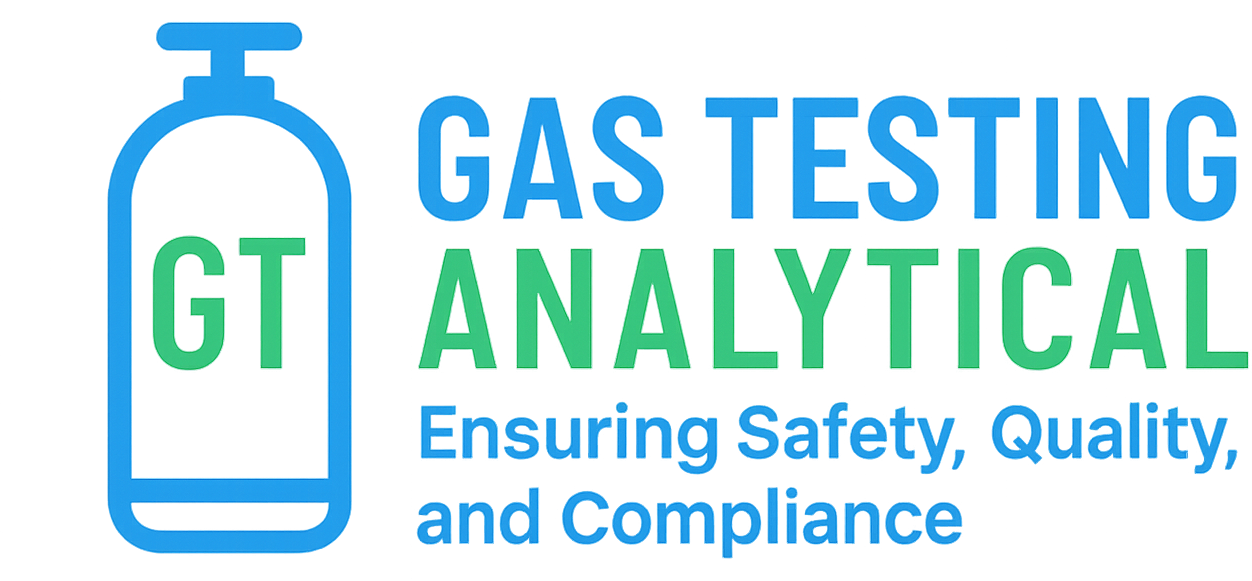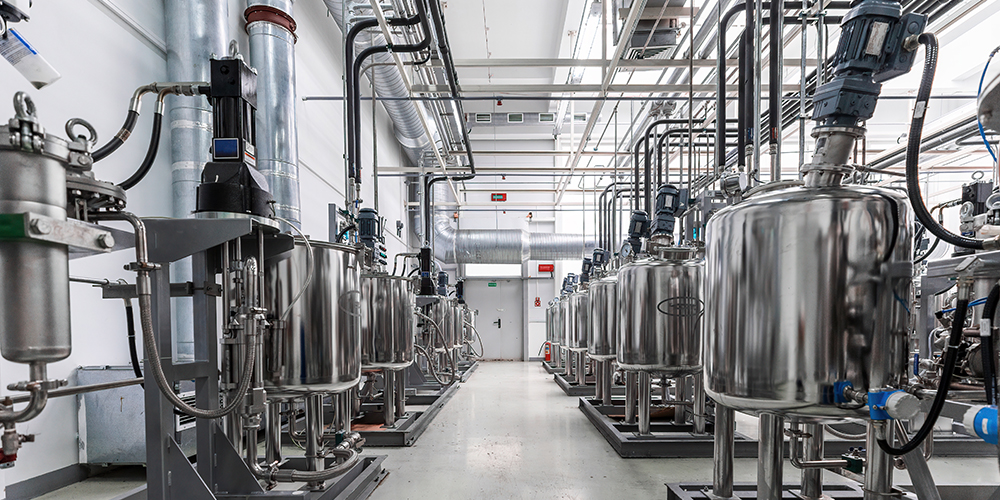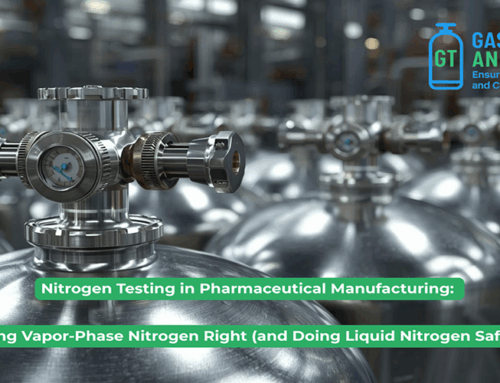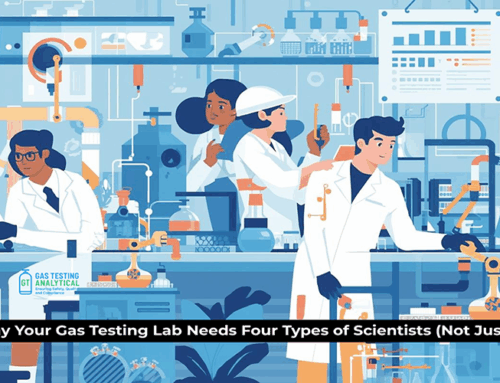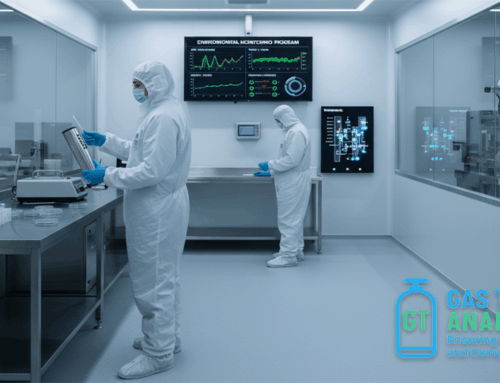How to Prepare for a Gas System Validation (and Pass the First Time)
Gas system validation isn’t a one-day activity—it’s a comprehensive process that begins with thorough risk assessment and ends with defensible data that can withstand the scrutiny of internal audits, regulatory inspections, and business continuity requirements. The difference between a successful validation and a costly re-validation often lies in the preparation phase, where attention to detail and systematic planning set the foundation for success.
The Cost of Getting It Wrong
Failed validations are expensive in ways that extend far beyond the immediate costs of re-testing. Manufacturing delays, regulatory compliance issues, and the need to revalidate can impact production schedules, delay product launches, and create cascading effects throughout your quality system. More importantly, inadequate validation can miss real contamination risks that could affect product quality and patient safety.
The key to first-time success lies in understanding that validation is not just about collecting data—it’s about building a defensible case that your gas systems consistently meet predetermined specifications under all relevant operating conditions.
Step 1: Identify Your Utilities – Mapping the Complete System
Begin by creating a comprehensive inventory of all process gases used in your facility. This goes beyond the obvious applications to include utility gases used in maintenance, cleaning, and support operations. Map each gas from its source (bulk storage, on-site generation, or cylinder supply) through the entire distribution network to every point of use.
Don’t overlook secondary applications that might not be immediately obvious. For example, instrument air used to operate control valves may not directly contact your product, but a failure in this system could cause process upsets that affect product quality. Similarly, breathing air systems used in maintenance operations could introduce contaminants if not properly controlled.
Document the system design including pipe materials, fittings, filters, regulators, and any treatment equipment. Understanding the system design helps identify potential contamination sources and determines appropriate sampling locations. Pay particular attention to dead legs, low-flow areas, and points where different materials join, as these are common sources of contamination.
Consider seasonal variations and operational changes that might affect gas quality. Systems that perform adequately during normal operations might experience problems during high-demand periods, temperature extremes, or when backup equipment is activated.
Step 2: Define Acceptance Criteria – The Foundation of Defensible Validation
Acceptance criteria must be based on sound scientific principles and regulatory requirements, not arbitrary selections. Start with relevant pharmacopeial monographs (USP, EP, JP) for gases that have established specifications. For gases without specific monographs, ISO 8573 provides internationally recognized standards for compressed air quality.
However, don’t simply adopt generic standards without considering your specific application. The requirements for nitrogen used in tablet coating may be different from nitrogen used to blanket sensitive chemical reactions. Consider the intended use, contact duration, and potential for product impact when establishing criteria.
Work with your process development and quality assurance teams to understand the critical quality attributes that could be affected by gas contamination. This understanding helps ensure that your acceptance criteria address the right parameters with appropriate sensitivity.
Document the rationale for each acceptance criterion. Regulatory inspectors and auditors will want to understand why specific limits were chosen and how they relate to product quality and patient safety. This documentation becomes part of your validation package and demonstrates the scientific basis for your approach.
Step 3: Develop a Comprehensive Sampling Plan
A robust sampling plan addresses the temporal, spatial, and operational variables that could affect gas quality. Your plan should cover multiple locations throughout each distribution system, multiple time points to address system variability, and multiple operational states to ensure performance under all relevant conditions.
Location selection should be risk-based, with emphasis on points of use, system extremities, and areas where contamination is most likely to occur. Include sampling points after each major system component (compressors, dryers, filters) to understand how each component affects gas quality and to facilitate troubleshooting if problems arise.
Temporal considerations include both short-term variability (hourly, daily) and long-term trends (seasonal, equipment aging). Design your sampling schedule to capture this variability while maintaining practical feasibility. Consider using statistical tools to optimize your sampling frequency and ensure adequate data coverage.
Operational state sampling is crucial for understanding system performance under different conditions. Test during normal production, startup and shutdown sequences, peak demand periods, and maintenance activities. Each of these states may present different contamination risks and require different control measures.
Step 4: Execute and Record – Turning Plans into Data
Execution phase success depends on rigorous adherence to predetermined procedures and real-time problem-solving when unexpected issues arise. Ensure that sampling personnel are properly trained not just in sample collection techniques, but also in the underlying principles of gas system contamination and the importance of maintaining sample integrity.
Sample collection procedures must address the unique challenges of gas sampling, including the need to purge sampling lines, maintain sample integrity during transport, and ensure that sampling activities don’t introduce contamination. Use appropriate sampling equipment designed for gas applications, and ensure that all equipment is properly calibrated and maintained.
Real-time monitoring during sampling can provide valuable insights into system performance and help identify potential problems before they affect validation results. Consider using portable analytical equipment to verify system performance during sampling activities.
Documentation during execution should capture not just analytical results, but also system conditions, operational context, and any deviations from planned procedures. This information is essential for data interpretation and provides the context needed for regulatory review.
Step 5: Final Report – Creating a Defensible Validation Package
The final validation report should tell a complete story of your gas system validation, from initial risk assessment through final conclusions. Organize the report to facilitate review by different audiences, including quality assurance personnel, regulatory inspectors, and technical specialists.
Start with a clear executive summary that highlights key findings, conclusions, and any recommendations for ongoing monitoring or system improvements. This summary should be understandable to non-technical readers while providing sufficient detail for technical review.
Present data in a logical sequence that demonstrates how validation objectives were met. Use statistical analysis where appropriate to demonstrate system capability and identify trends that might affect ongoing performance. Include control charts, trend analyses, and capability studies to provide quantitative evidence of system performance.
Address any deviations from planned procedures or unexpected results with thorough investigations and appropriate corrective actions. Demonstrate that these deviations don’t affect the validity of your conclusions and that appropriate measures have been taken to prevent recurrence.
Include recommendations for ongoing monitoring, system maintenance, and periodic revalidation. These recommendations should be based on the validation results and provide practical guidance for maintaining system performance over time.
Beyond Validation: Building a Sustainable Program
Successful validation is just the beginning of effective gas system management. Use validation results to design ongoing monitoring programs that provide early warning of potential problems. Establish procedures for investigating out-of-specification results and taking appropriate corrective actions.
Consider implementing continuous monitoring for critical parameters where feasible. Real-time monitoring can provide immediate feedback on system performance and enable rapid response to potential problems.
Regular review of validation data can identify trends that might indicate emerging problems or opportunities for system improvement. Use this information to optimize maintenance schedules, upgrade equipment, and refine operational procedures.
Make validation a competitive advantage, not just a compliance requirement.
Partner with experienced gas testing professionals who understand both the technical requirements and the regulatory expectations. Gas Testing Analytical brings the expertise, equipment, and procedures needed to ensure your validation succeeds the first time and provides the foundation for ongoing system excellence.
